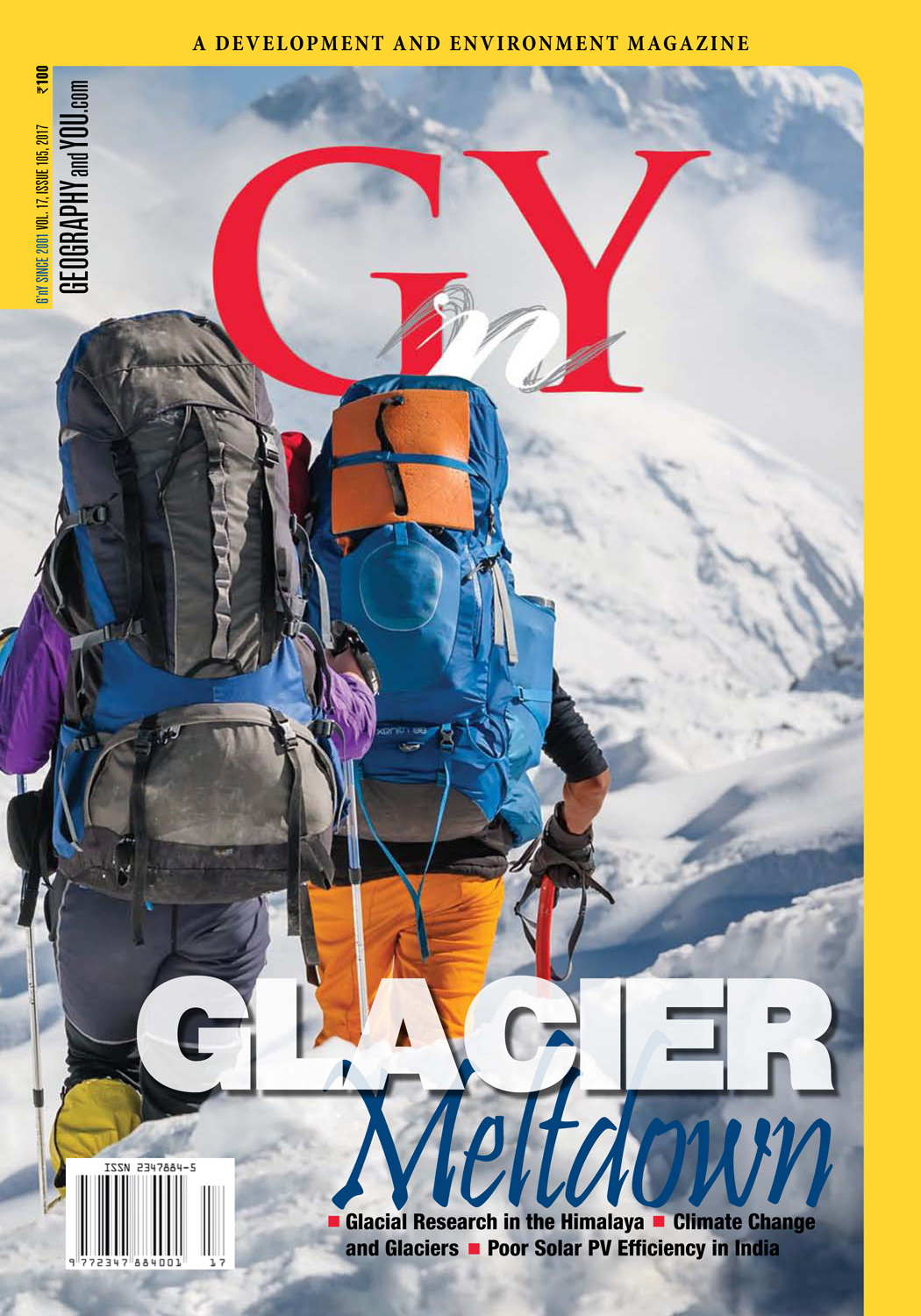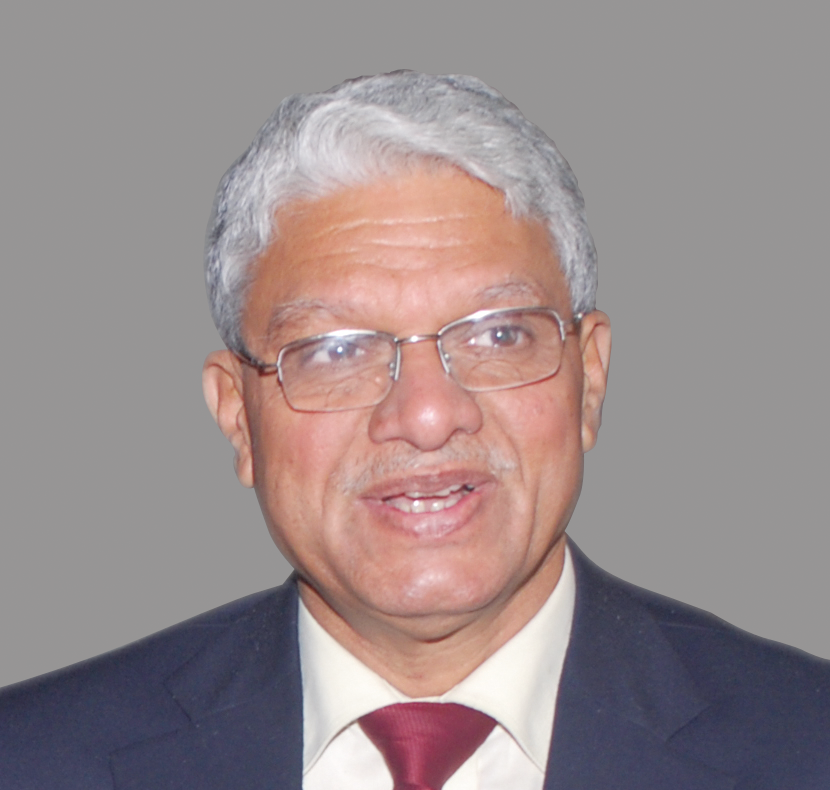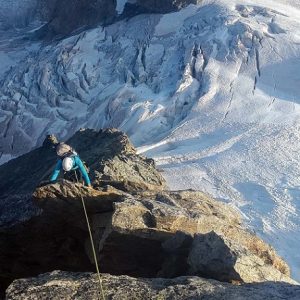
Expert Panel

Vice Chancellor, MG Kashi Vidyapeeth, Varanasi.

Chairperson, National Biodiversity Authority, Chennai.

Air Vice Marshal (Retd) Former DG, IMD, New Delhi.

Former Member Secretary, Central Pollution Control Board, New Delhi.

Former Director, NCAOR, Goa.

Professor, CSRD, Jawaharlal Nehru University, New Delhi.

Professor, CSRD, Jawaharlal Nehru University, New Delhi.

Director, Economic Research, Nielsen, New Delhi.
Inside this issue
Glacier Meltdown
The cryosphere acts as sensitive thermometers recording the fluctuations in the climate. The Antarctic, the Arctic and the Himalaya are all showing signs of increasing ice mass loss on a decadal scale as a consequence of average rise of 0.8 oC in global temperatures since 1880 (IPCC, 2013). The meteorological observatories in the Arctic, the Antarctic and Tibet—demonstrate a rise in temperature over the last three decades.
Himalaya has been warming at a rate much higher than the global average. The results of studies on the glaciers of three basins - Indus, Ganga and Brahmaputra conducted over three decades are discussed.
In the central and eastern Himalayas, a general negative mass balance has been reported, whereas in the glaciers of the Karakoram Range in the northwestern Himalaya, heterogeneous behaviour is depicted.
The Arctic amplification—as it has been termed, is resulting in a perceptible shift of this region to a new environment which is warmer, wetter and more variable than ever before.
International Relations
We need to realise that climate change under the Anthropocene, the present era of human civilization, may have long ranging impacts on the two Polar regions and therefore make some essential policy changes accordingly.
Geo-Archaeology
Foraminifera are sea organisms which have been widely used in palaeoceanography. The organisms indicate sea level changes and have played a significant role in identifying the oldest dockyard at Lothal in Gujarat.
Climate Change
The successful prediction of the recent cyclones in the Arabian Sea by Princeton University researchers along with the NOAA using climate models with temperature rise and atmospheric pollutants as variables raises poignant questions over climate change.
Disaster Study
Natural disasters in India are frequent and common. Around 85 per cent of the geographical area in India is vulnerable to natural disasters. Schools get affected every year in these areas. This article has made an attempt to explain how children in disaster prone areas lose access to schooling.
It is now widely acknowledged that when disasters occur, not all members of the ‘affected community’ are affected the same way. The earlier literature on gender and disasters over-emphasized women’s vulnerabilities in the aftermath of a disaster due to their care-giving roles. It did not consider the differential vulnerabilities of diverse groups of women based on their class, caste, race, age, occupation or sexual orientations. Similarly, men’s differential vulnerabilities were seldom discussed in the early literature on this subject. After disasters like the 2004 Tsunami and 2005 Hurricane Katrina however, the importance of the intersectionality of gender with race, occupation and class and other axes of social identity became more visible and discussed in the literature. This paper provides an overview of the literature on gender and disasters and calls for the need to nuance identity categories based on their intersectionality and multiplicity to achieve more sensitive and effective disaster responses.
Renewable Energy
India is fast emerging as the largest market for low cost and poor quality solar photovoltaics (PV) modules— a compounding hazardous waste, especially threatening in the absence of adequate quality control.
Advertorial
Water Pollution
Testing pollution levels in natural water bodies can require a considerable amount of gear and instrumentation. However, there is another much simpler solution. Observing the species of insects that live in natural water bodies and identifying them can reveal how polluted that particular water body is.
In brief
Tiny bubbles of air trapped in ice blocks, hundreds of years ago, help scientists decipher how the world’s climate changed over eons. These ice blocks are locked up in glaciers that sheet most of Arctic and Antarctic, apart from closer home, the Himalaya. Interestingly these trapped air bubbles ca

